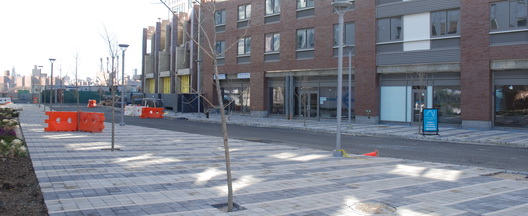Williamsburg-Greenpoint Rezoning & 197-a

At first glance, 197-a looks like one more addition to the alphabet soup of bureaucratic programs and acronyms and reminds one of 421-a. Both are important parts of how business is done in neighborhoods around the city, and particularly around Brooklyn. Yesterday Brownstoner noted that 197-a would get some teeth under a new bill introduced in the City Council. (421-a is the "developer tax break" that gave huge tax abatements to developments like the Richard Meier building at Grand Army Plaza and that has been slightly reigned in with some changes that will take effect later this year.)
197-a Plans are community-developed, but are routinely ignored because there is no requirement that they be followed. A case in point is the Williamsburg-Greenpoint rezoning that allowed waterfront highrises. Here's are some excerpts from a long piece written by activist Phil Depaolo who is a veteran of many zoning and development battles in North Brooklyn:
After more than a decade of work, community groups in the Brooklyn waterfront neighborhoods of Greenpoint and Williamsburg had reached consensus on plans to revitalize their industrial waterfront. The Greenpoint and Williamsburg 197-a Plan proposed a mix of low to mid rise housing in the neighborhood, so it would be affordable to tenants in this working class neighborhood. The 197-a plans proposed that the mix of industry and housing be brought down to the waterfront, but without the noxious industries like waste transfer stations that have concentrated in the area in recent years. And they wanted public access to the waterfront.The details are complicated, but community planning with teeth would seriously changed the city's planning and zoning process.
The massive rezoning of Greenpoint and Williamsburg that the City Council approved in May 2005 bears little resemblance to the community plans. Ever since the City Council voted for the Greenpoint and Williamsburg 197-a plans in 2001, they failed to lift a finger to implement them. City agencies went into hiding. There were no budget requests to create public access on the waterfront, no initiatives to preserve industry, and no new housing. Instead, the city turned the other way as developers illegally converted industrial properties to unaffordable lofts, and did little to stop the legal conversions. Then the City Planning Commission and City Council approved a sweeping rezoning of the waterfront that opened the way for 10,000 units of high rise housing, and conversion of industrial properties to residential use. Brooklyn’s Community Board One and the Brooklyn Borough President voted against the rezoning...
Labels: Rezoning, Urban Planning, Williamsburg

0 Comments:
Post a Comment
<< Home